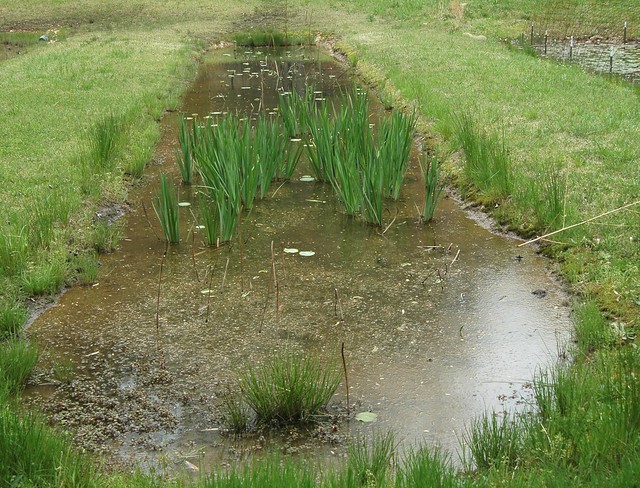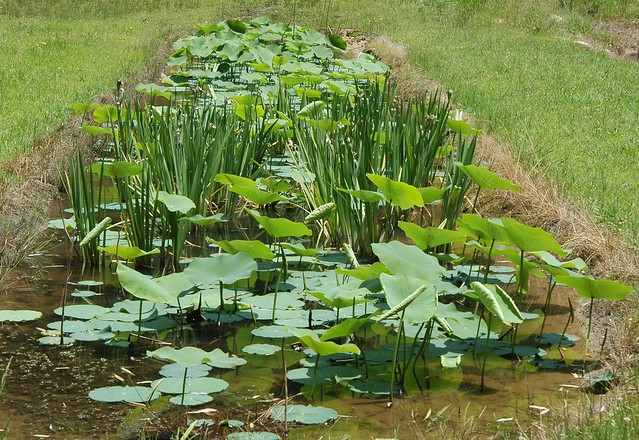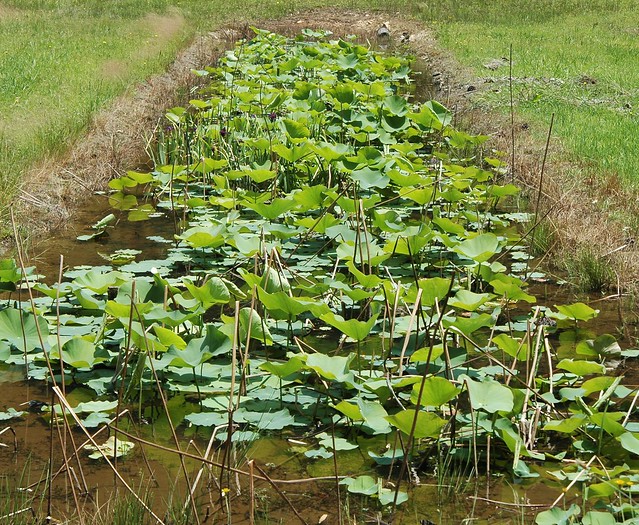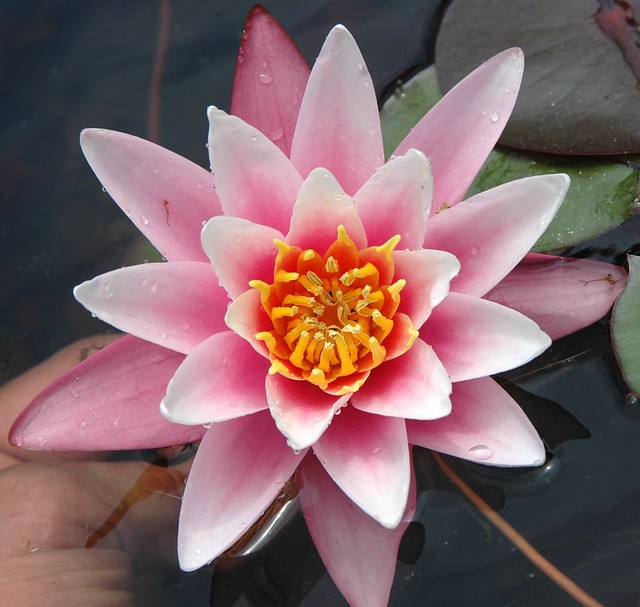jamesp
Cave Dweller 
Member since October 2012
Posts: 36,612
|
Post by jamesp on May 15, 2015 15:23:09 GMT -5
To keep up with plant timing mostly. Canna and exotic blooms, concrete bog planting system, large delivery of horsetail, disintegrating 1000 pound concrete water garden, 16 gallon drum veggie garden, wild Lousiana Iris, lotus ponds, fire killed bamboo sprouts, floating fern(azolla), miniature and micro miniature cattails, strange new purple water Iris seedling, leaf rolling caterpillars folding broadleaf thalia leaves, purple pickerel, alligator weed growing in parrot's feather, fire ants, 40 gallon lotus stock pots, new water lily blooms, hair grass. www.flickr.com/photos/67205364@N06/sets/72157652791305316lotus growth 'Maggie Bell Slocum' April 9  Maggie Bell Slocum, May 15. Iris already bloomed and setting seed  Lotus growth 'Charles Thomas' April 9  Charles Thomas May 15  |
|
Fossilman
Cave Dweller 
Member since January 2009
Posts: 20,723 
|
Post by Fossilman on May 15, 2015 19:59:15 GMT -5
Maggie Bell Slocum...Thumbs up
|
|
quartz
Cave Dweller  breakin' rocks in the hot sun
breakin' rocks in the hot sun
Member since February 2010
Posts: 3,359
|
Post by quartz on May 15, 2015 23:10:09 GMT -5
Enjoyed the pics., Carol especially likes the flowers.
|
|
Deleted
Deleted Member
Member since January 1970
Posts: 0
|
Post by Deleted on May 16, 2015 17:03:35 GMT -5
Wow!!  |
|
|
|
Post by snowmom on May 17, 2015 5:29:22 GMT -5
lucky you have time to turn around these days. Those are awesome. Has to be a great deal of satisfaction to see plantings doing so well. You import horsetail from someplace else? We have it everywhere here, I pull it out of my flower beds almost daily. Stuff is an aggressive 'taker over' of my yard. I think it is beautiful and wish my spouse would tolerate a stand of it in one corner somewhere, but that is not to be. What kind do you plant?
|
|
jamesp
Cave Dweller 
Member since October 2012
Posts: 36,612
|
Post by jamesp on May 17, 2015 6:39:56 GMT -5
lucky you have time to turn around these days. Those are awesome. Has to be a great deal of satisfaction to see plantings doing so well. You import horsetail from someplace else? We have it everywhere here, I pull it out of my flower beds almost daily. Stuff is an aggressive 'taker over' of my yard. I think it is beautiful and wish my spouse would tolerate a stand of it in one corner somewhere, but that is not to be. What kind do you plant? That horsetail was some stock from 15 years ago that only gets 3 feet tall. Some types are less water friendly. Plant them in 6 inch pots full of clay in April to be sold the next year. Grown in the water. About 600 of them. One of the clients had a landscaper that needed 100 pots. They paid a lot after the mark up of the middle man. Wholesale is $5, they mark them up to $16 !! Expensive purchase. Most popular single plant at my nursery. You know that it is a fern, and very primitive plant. Was the size of a tree in prehistory. |
|
|
|
Post by snowmom on May 18, 2015 5:27:52 GMT -5
Horsetail are awesome. I've seen fossils of them, kinda cooler to have the living fossil! How interesting that it is the most popular plant there. Are they not native to your area at all? That might explain some of the attraction. In Il where I grew up and here in MI they are just part of the natural landscape.
|
|
jamesp
Cave Dweller 
Member since October 2012
Posts: 36,612
|
Post by jamesp on May 19, 2015 13:15:12 GMT -5
Horsetail are awesome. I've seen fossils of them, kinda cooler to have the living fossil! How interesting that it is the most popular plant there. Are they not native to your area at all? That might explain some of the attraction. In Il where I grew up and here in MI they are just part of the natural landscape. All over Louisiana, British Columbia, all over the west, obviously Michigan. Never seen a wild stand of them in Florida or Georgia. Oh well. They are in many planted hedges along the walls of commercial buildings and bars in Atlanta. Very popular. all growing terrestrially. All mine with 2-3 inches of water over the soil. In British Columbia they were growing in rivers and bogs. And that is where I got my stock. The large S. American variety likes the upland jungle. The tiny dwarf one looks like grass and it does real wet soil. |
|
|
|
Post by Drummond Island Rocks on May 19, 2015 17:48:25 GMT -5
stunning photography in that set. Looks like a huge investment of time and money in your operation but you sure get great results and you get to do something you enjoy doing. not many folks can say that.
Chuck
|
|
jamesp
Cave Dweller 
Member since October 2012
Posts: 36,612
|
Post by jamesp on May 19, 2015 18:14:17 GMT -5
stunning photography in that set. Looks like a huge investment of time and money in your operation but you sure get great results and you get to do something you enjoy doing. not many folks can say that. Chuck Not going to get rich Chuck. Been at it almost 25 years so it is a routine and do get a lot of time off. It is as much a hobby as a job. Keeps me active, will say that. At this time of the year, too active ha. Does have great write-offs since this business qualifies as a farmer. Like using the tumbler to blend fertilizer(tools)  |
|
Deleted
Deleted Member
Member since January 1970
Posts: 0
|
Post by Deleted on May 19, 2015 21:33:59 GMT -5
I thought Equisitum was a sedge?
Sedges have edges
And rushes are round
And grasses have nodes
From their top the ground.
Its a fern?
|
|
|
|
Post by snowmom on May 20, 2015 4:54:36 GMT -5
en.wikipedia.org/wiki/Equisetumit is in its own classification, I think the term rush is used colloquially. but all stems and branches are rounded and segmented, and they are quite tough. pretty neat living fossil.
|
|
jamesp
Cave Dweller 
Member since October 2012
Posts: 36,612
|
Post by jamesp on May 26, 2015 7:09:52 GMT -5
en.wikipedia.org/wiki/Equisetumit is in its own classification, I think the term rush is used colloquially. but all stems and branches are rounded and segmented, and they are quite tough. pretty neat living fossil. Also called scouring rush. Old timers used it at the creek to scrub pots and pans. It, like bamboo and seed hulls from many grasses are full of silica. The silica is probably opaline but still very abrasive. @shotgunner Strange structure for a fern, it does reproduce by fern like spores. Fossil beds in Alabama full of 10-12 inch diameter trunk sections, so it used to get real big. dino rush. All this mentioned in your Wiki reference. This is the variety that i grow, others rot in the water-Equisetum fluviatile L. – Water Horsetail or Equisetum hyemale L. – Rough Horsetail, Scouringrush Horsetail. Guessing hyemale. another possibility is palustrae |
|


















